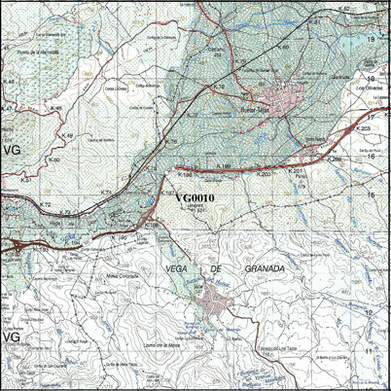Area Two, VG0010.

Two towns feature in this area, the largest is Huetor Tajar and the other is Salar, a very small slice of Villanueva Mesia just creeps into the North East corner. Both are towns very much involved with agriculture and smaller business based on several industrial parks. Large areas of land especially along the Genil Valley are set to crops and probably the best known is the locally (World?) famous Huétor Tájar asparagus. The A92 Autovia, Granada to Bobadilla railway line are also features of this square as are the massive areas of Olives and to a lesser degree Almonds. Two small hills stand just to the North of Loja but creep into this area, Hacho and Puerto de la Alamedilla; both have good areas of cliff for nesting birds and grassland for Orchids and other wildflowers. There are also many seasonal streams (Arroyo’s and Barranco's) that cross thought the countryside, some more permanent than other but after the wet winters of 2009 / 10 and 2010 / 11 some have sprung back into life. Again access is very good via the many tracks and roads.
